Okeanos was named one of Fast Company’s 2022 World Changing Ideas!
+
|
|
|||
|
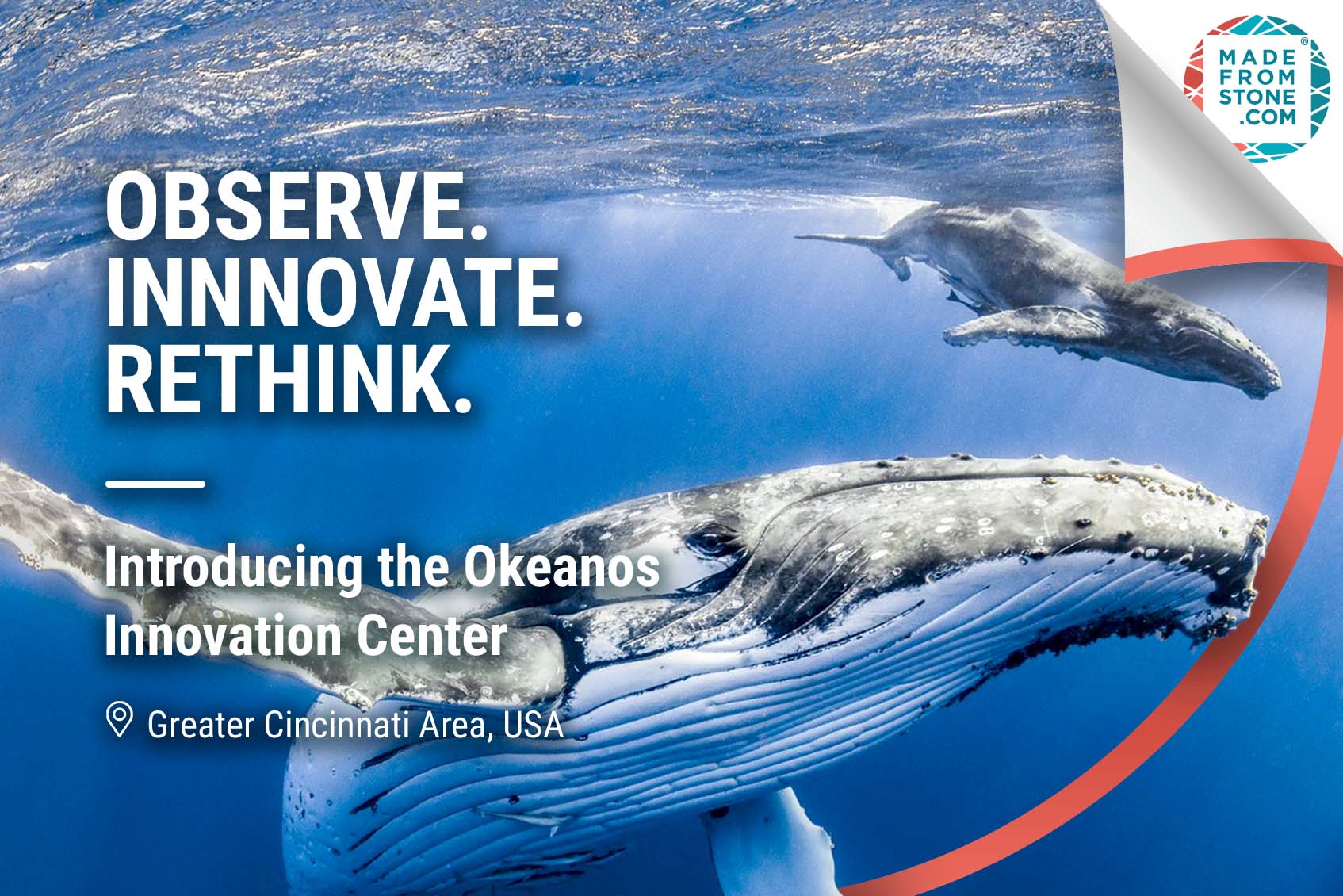
Okeanos is thrilled to introduce the Okeanos Innovation Center. Okeanos Innovation Center (OKIV) will be the development hub for Okeanos’ world-changing sustainable technologies aimed at reducing plastic pollution and lowering our collective CO2 footprint.
The facility, located in the Greater Cincinnati area, is equipped with state-of-the-art manufacturing and lab equipment, and will conceptualize new additives, study material application & degradation, and conduct ongoing research on the effects of calcium carbonate on the natural world.
The Okeanos Innovation Center will be under the direction of VP of Process Innovation,
Mary Lehrter, and VP Degradation Innovation, Ray Loflin.

Worried about the impact your holiday travels might have on the environment? Good news! Google recently released a new feature on Google Flights that allows travelers booking flights to compare carbon emissions impacts for different routes.
A green badge will appear next to flights with lower emissions so you can make a sustainable selection. Now you can book a trip home to visit the family and monitor your carbon footprint. It’s a win-win, right?
Google has been stepping up their sustainability game, recently joining Travalyst Coalition, alongside leading travel brands like Booking.com to commit to setting industry-wide sustainability standards.
As much as this new feature is worth celebrating, it’s also coming under some scrutiny for what critics are calling greenwashing, or the process through which a company conveys false or murky information about how environmentally friendly they are.
True green-tourism actually only accounts for a small subset of the overall travel industry, and air travel with lower carbon emissions, while better for the environment, is still air travel.
That being said, if you have a choice between a lower-emissions itinerary and one that has a significant environmental impact, it seems like a no-brainer… just like choosing products with a lower carbon footprint instead of those made with virgin plastic!
Check out our LCA calculator to see just how much you can reduce your carbon footprint by making the switch to stone!
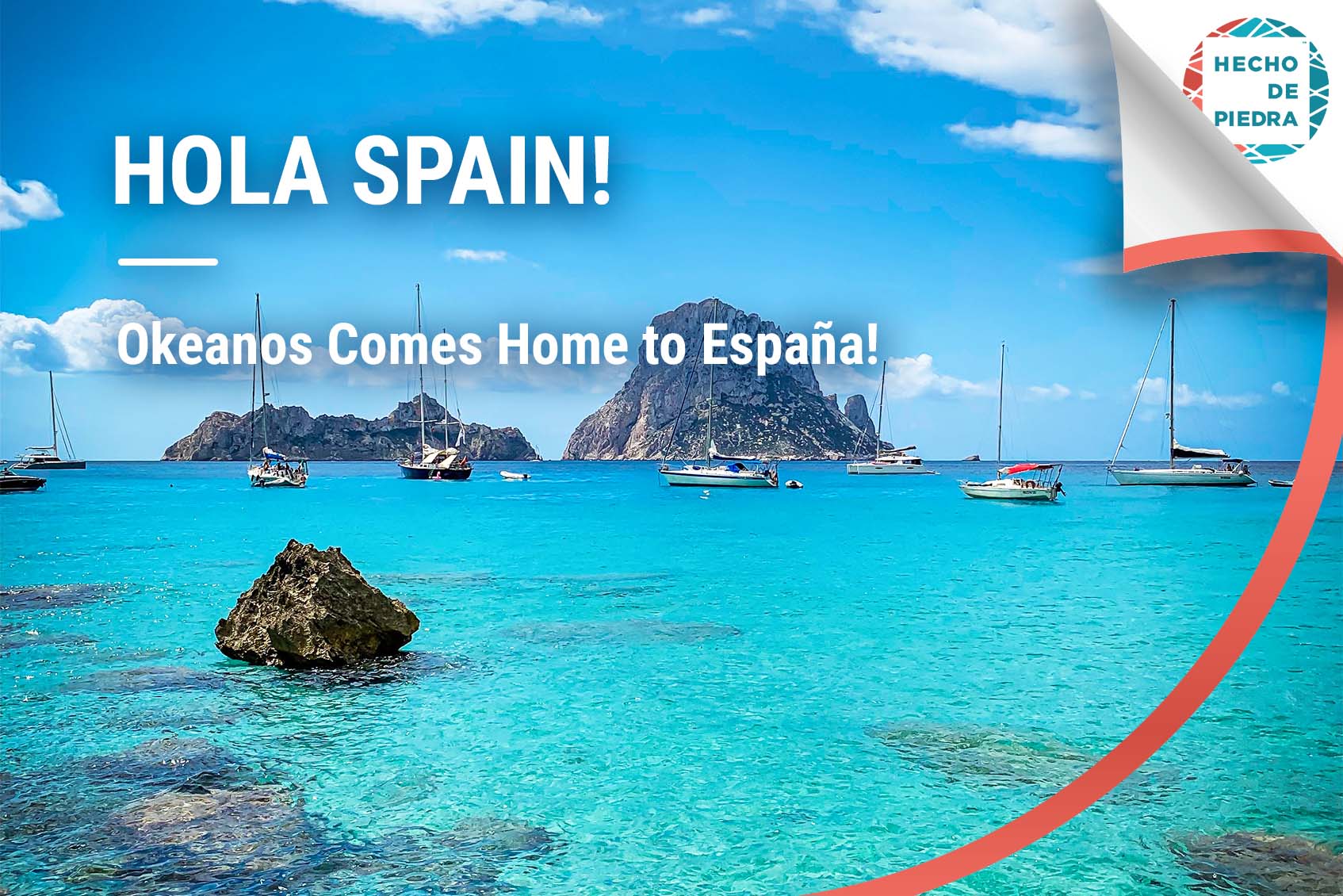
In this month’s issue of Set in Stone, we’re traveling to a place where the weather is warm, the sangria is flowing, and the spectacular seaside draw millions of visitors from around the world…Spain! Watch the video to learn more about our newest partner in plastic pollution – Okeanos Spain.
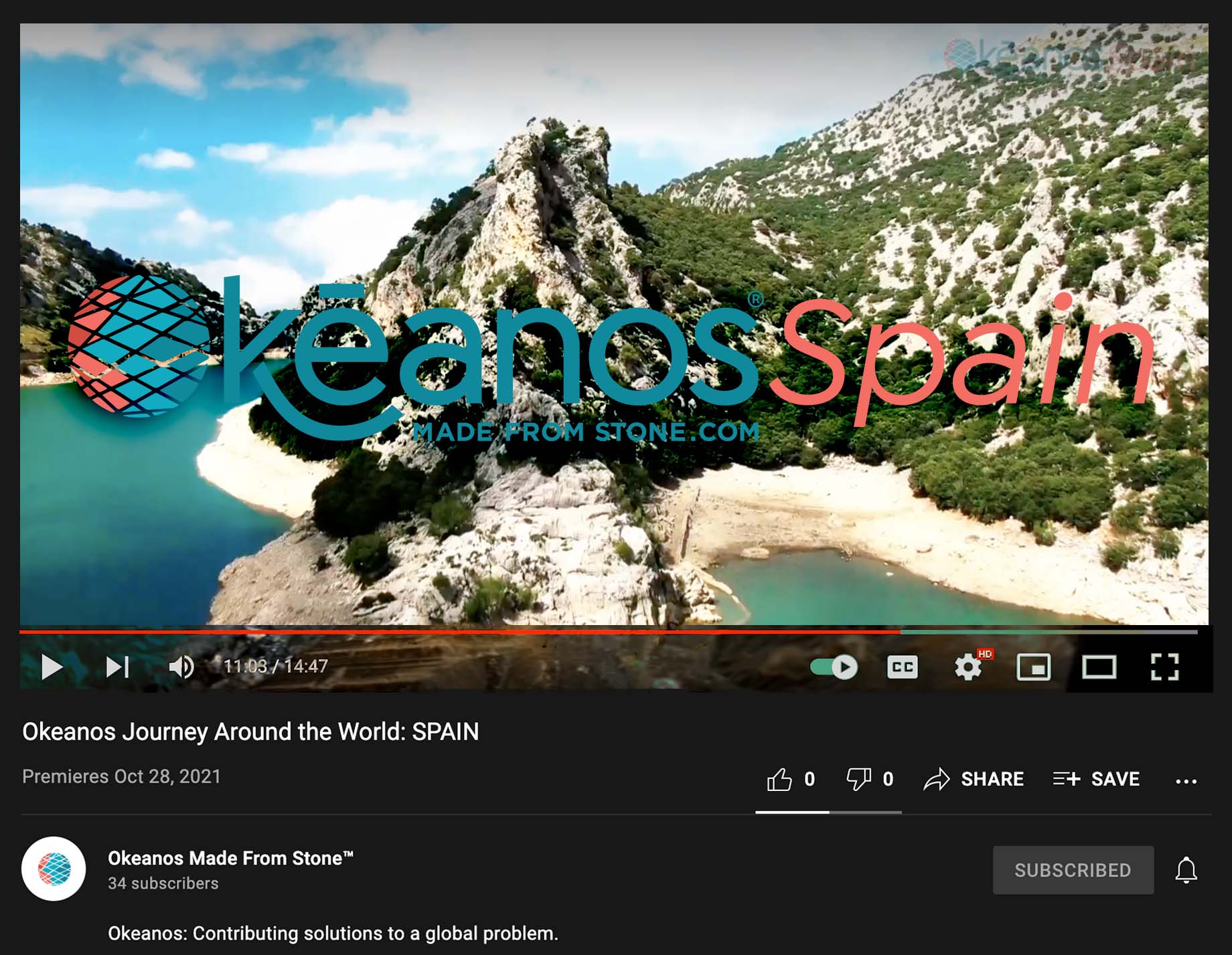
Want to say Hola to our newest team?
Contact Trade@Madefromstone.com
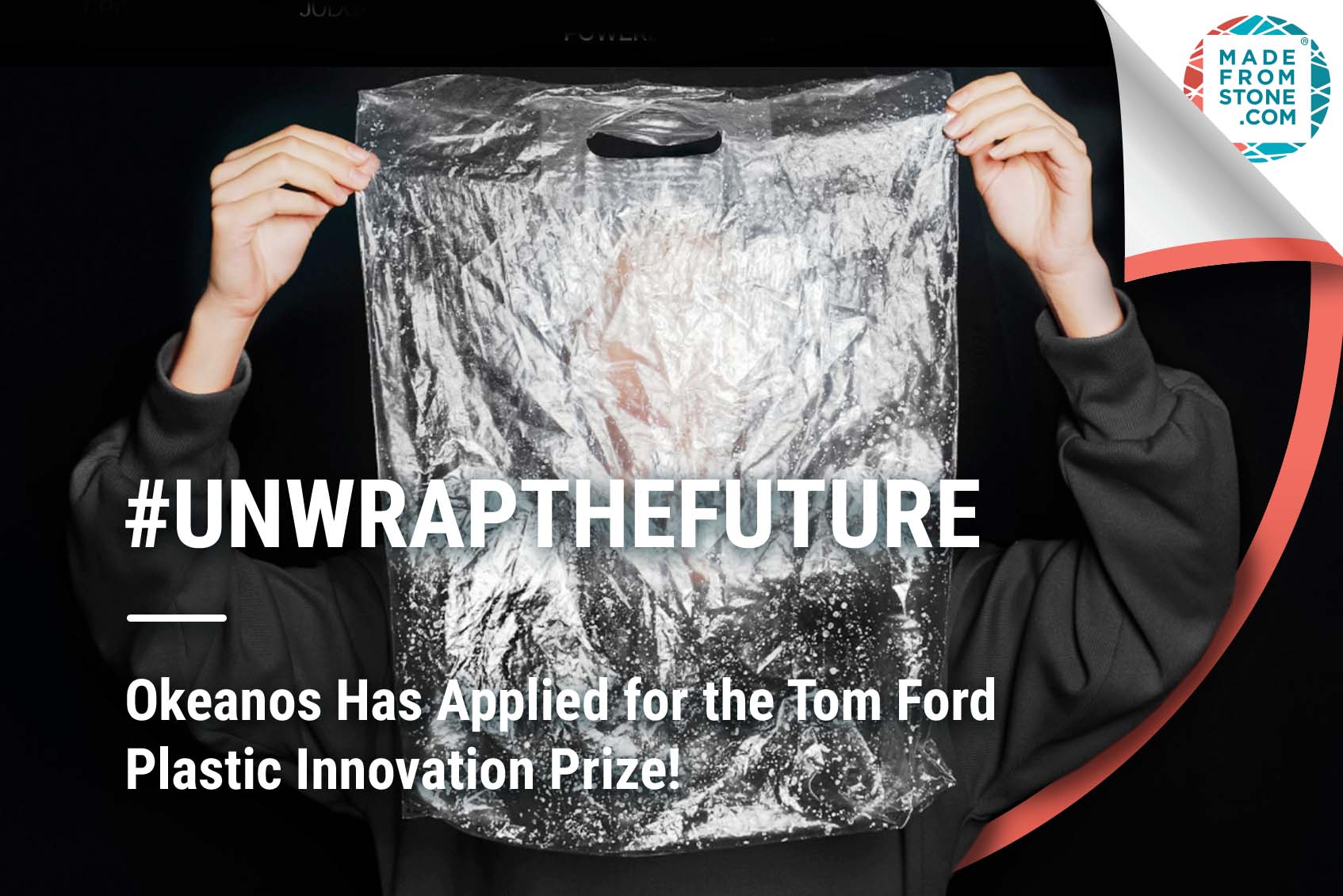
We are excited to announce that Okeanos® is an applicant for the Tom Ford Plastic Innovation Prize powered by Lonely Whale’s 52HZ. The prize will both catalyze new innovation and accelerate the trajectory of companies, like ours, already working on thin-film plastic alternatives, bringing visibility to the issue, vetting solutions, and facilitating scale.
We’ll keep you posted on our journey as the competition progresses!
To learn more, visit plasticprize.org

Meet our new anti-microbial film solution! Antibacterial film made from stone is appropriate for anti-mold and anti-fungus applications including stiffeners in soap packaging. Containing 60% calcium carbonate, our proprietary technology allows for simple processing, eliminating the need for a coating of antimicrobial solution.
To learn more about our new antibacterial film, contact trade@madefromstone.com

Thinking about taking a holiday cruise? You’re not alone!
Prior to the start of the pandemic, the cruise industry was expanding at an astounding rate, growing 48% between 2012 and 2018. During those years, cruise ships became increasingly more luxurious, vastly expanding their offerings and destinations, enticing travelers from all over the world.
Unfortunately, the majority of these passengers float blissfully along unaware of the havoc their vessels are wreaking on the very environments they’ve traveled to experience.
Did you know that a large cruise ship has the environmental impact of 12,000 cars? A recent study published in Marine Pollution Bulletin, pulls together research from an international team of scientists for a jaw dropping report on the impact of these floating cities.
“In this moment of discussion that we’re all having around climate and environmental change and how we could change our own habits around flying and travel, I think we need to shine a light on this,” explains Professor Lora Fleming, Director of the European Centre for Environment & Human Health at the University of Exeter and co-author of the study.
For years the cruise industry has been cruising along unregulated, releasing astronomical amounts of CO2 and ocean pollution. For example, the study found that passengers on a seven-day Antarctic cruise cause as much CO2 to be released as the average European over the course of an entire year, and that a stay of a single night on the average cruise ship required 12 times more energy than the same one night stay in a hotel!
The industry is also drowning under a waste management problem. The study concluded that a ship carrying an average of 2,700 passengers can create a Ton of waste per day! While cruise ships represent only a portion of the global shipping industry, they account for a quarter of all the waste produced by that sector.
Scientists are hoping the stunning report will push lawmakers around the world to re-examine existing legislation and enact real, measurable change. In the meantime, it’s up to the cruise lines to take sustainable steps in the right direction, and fortunately several newer vessels like Virgin’s new Scarlet Lady have already stepped up to the plate, banning single-use items, prioritizing local sourcing, and converting heat waste to energy.
So if you’re planning a cruise, do your research to make sure your boat is sailing
toward environmentally friendly choices! For more shocking sustainability stories make
sure to follow @MadeFromStone on Instagram!
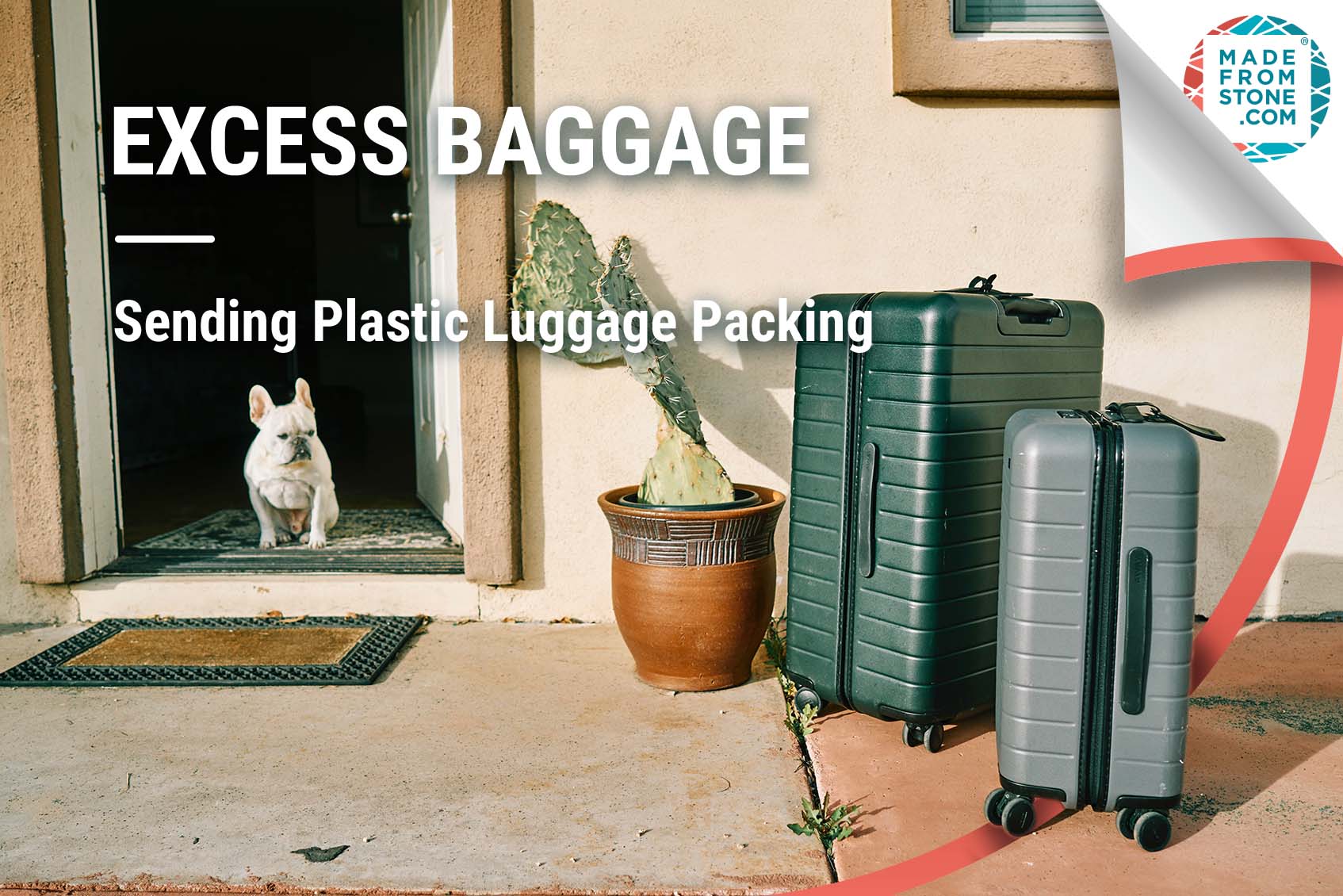
It’s no secret that we as a society have a lot of baggage; not the emotional kind, but the small rolling kind that you often struggle to squish into those tiny overhead bins. In Western Europe alone, sales of luggage reached nearly 25 billion in 2019!
Unfortunately, most of this luggage is made to last, and often constructed out of virgin nylon or hard sided PVC plastic– both which are not commonly recyclable. So, if you don’t want your baggage to take a trip to the landfill, here are a few tips for shopping for low-impact luggage.
Here at Okeanos, we’re exploring a myriad of possible applications for our technology…Is it so hard to imagine suitcases Made From Stone?
Head over to our Innovation page to learn more about the work we’re doing.
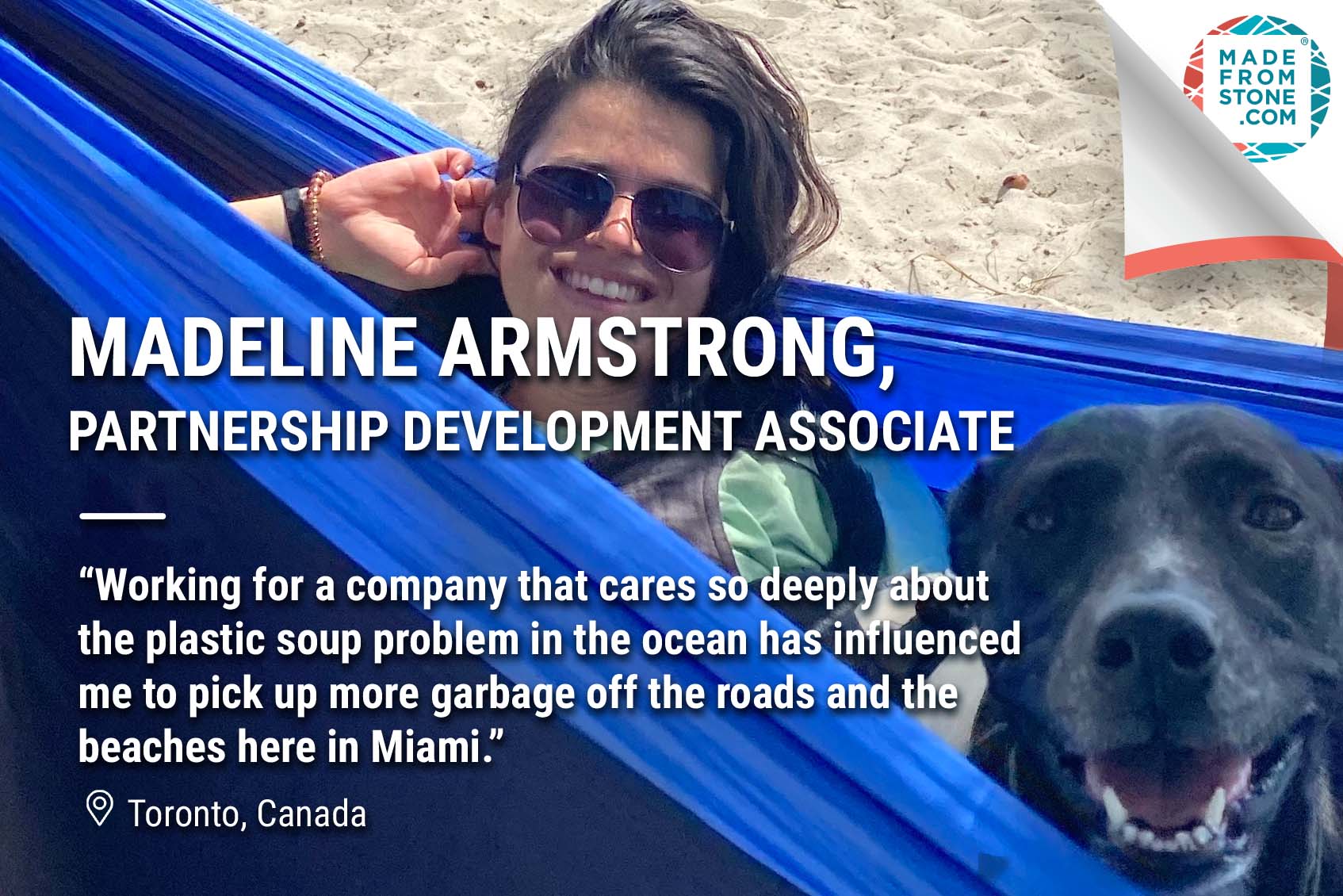
Meet Madeline Armstrong, our Partnership Development Associate! Maddy hails from Canada, but got her Master’s degree in Sustainable Business at the University of Miami, leading her to Okeanos. To learn more about what moves her, read on!
Tell us about your childhood. Did you spend time by the ocean?
I grew up in Canada and even though it isn’t a land-locked country, I didn’t grow up close to the ocean. I did, however, grow up by a ton of lakes. I’m not sure you can drive for longer than 20 minutes in Ontario without seeing a lake. I spent my summers swimming and doing water sports like tubing and water skiing or boating to the candy store and spent my winters skating on lakes and canals.
I grew up terrified of the ocean! I remember one vacation my family was planning, and my parents told my sister and me that we were going to go on a Caribbean cruise, and I cried I was so scared to be in the middle of the ocean. I have since come to terms that I respect the ocean for its magnificent, beautiful ecosystem, but still don’t want to go too deep into it.
How has working for an environmentally focused company impacted the choices you make in your daily life?
Working for an environmentally focused company has always been my goal post-undergraduate and graduate studies. I feel like I am a conscious consumer but working for a company that cares so deeply about the plastic soup problem in the ocean has influenced me to pick up more garbage off the roads and the beaches here in Miami.
You work on the partnerships team. What is the common thread that you notice when you speak to potential partners in different countries?
Their eagerness to try a new project and finding a common ground and mission to focus on.
You also work with the intergovernmental team on research. What’s the most surprising thing you’ve learned since you started here?
Legal terms! I never thought I would be looking into legal terminology and learning so much about governments and different government structures. The other day we were talking about a paper and analyzing it, I had to google two or three terms that were being used.
If you could pick a body of water anywhere in the world to spend time near, where would it be?
There is a series of very close lakes in a large Provincial Park in Ontario called Algonquin. This Park is secluded and largely uninhabitable besides campers. I love this area because you have no choice but to get away and really take in your surroundings. No motorboats are on the secluded lakes, just canoes and kayakers. The stretches of land where you must portage between lakes are humbling and the vast tree line along the shore is beyond beautiful. You just feel one with nature and there isn’t a worry in the world (besides a bear eating your food).
What new skill or hobby did you pick up during quarantine?
I started painting during quarantine. My mom started a paint by numbers club that met on zoom every Wednesday night. I’ve never enjoyed painting before but being told where to paint and seeing the painting come together was really neat. It was such a fun way to socialize with friends and family while still in quarantine and living all over the place.
Now that the world is preparing to re-open, what is the thing you’re most looking forward to?
I’m looking forward to being able to travel again, to see family and friends that I haven’t gotten to see the past year and explore new places together. I would love to be able to go on a ski trip in the winter this year and try a new mountain.
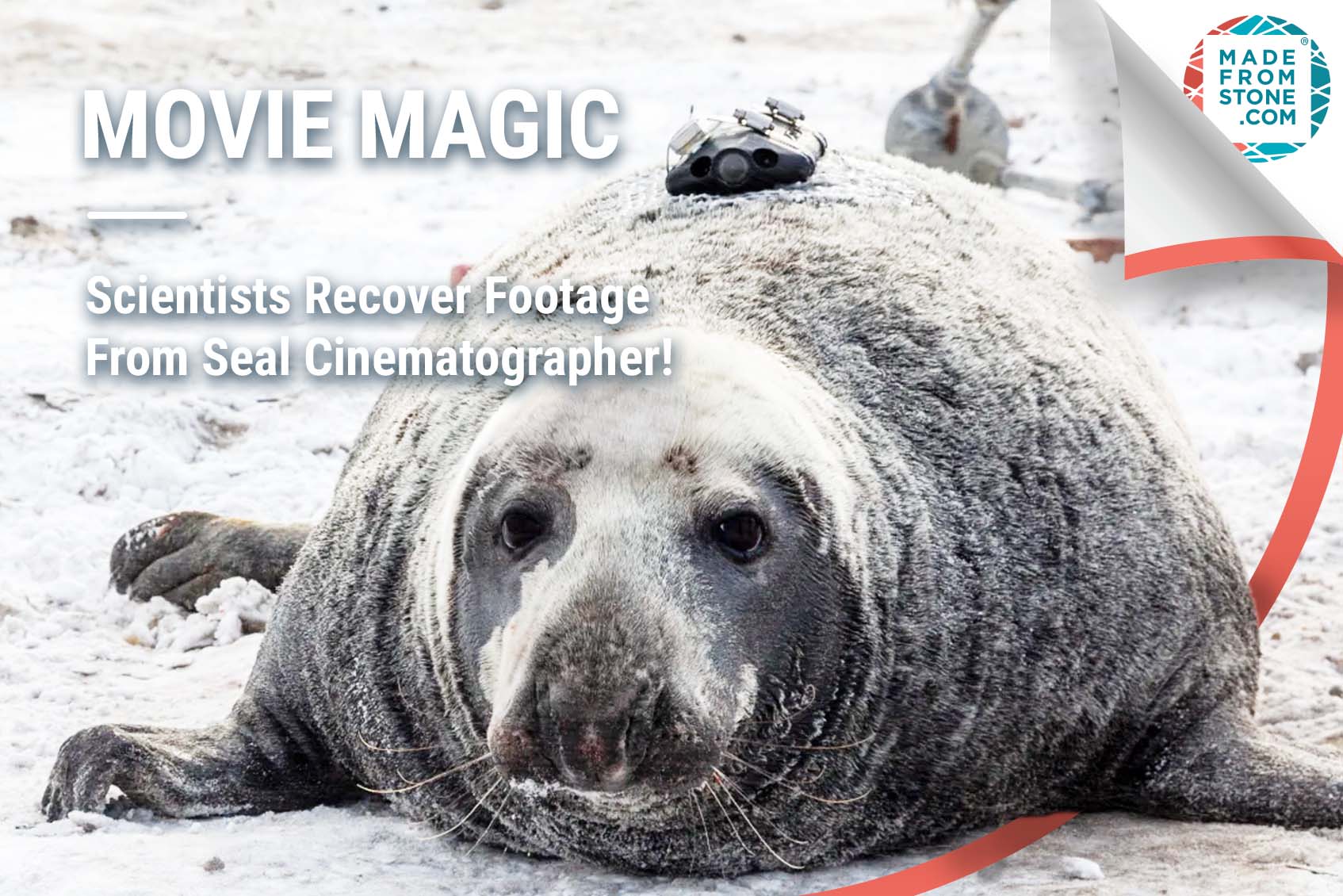
How do seals sleep? This isn’t a knock knock joke…we genuinely want to know. Fortunately, we don’t have to wait much longer to find out! Thanks to one clever and curious biologist and a tiny mounted camera, we now have a window into a day in the life of gray seals.
In 2017, Department of Fisheries and Oceans biologist Damian Ligard attached a small camera to a male grey seal on Sable Island. He hoped to see the same seal come ashore so he could retrieve the camera, but unfortunately couldn’t find him again. Ligard assumed that the camera fell off the seal as it molted in the spring.
Recently, however, the camera was recovered from the ocean floor by a vessel fishing for surf clams in Nova Scotia! Not only does it still work, but to Ligard’s surprise, it contained 19 hours of footage from the seal’s adventures. While he’s still sifting through the footage, he’s already viewed video of the seal foraging, chasing females on the surface, diving, and sleeping.
Next month, Ligard plans to redeploy the camera, this time attached to a female seal which will allow the biologist to recover it when the seal returns to shore to give birth. We don’t know about you, but we’ll be keeping an eye out for new footage from the sea-bound cinematographer.
Perhaps we have the next tiktok star on our hands?
Check out other viral videos on our Tiktok channel
News You Should Know:
| Cookie | Duration | Description |
|---|---|---|
| cookielawinfo-checkbox-analytics | 11 months | This cookie is set by GDPR Cookie Consent plugin. The cookie is used to store the user consent for the cookies in the category "Analytics". |
| cookielawinfo-checkbox-functional | 11 months | The cookie is set by GDPR cookie consent to record the user consent for the cookies in the category "Functional". |
| cookielawinfo-checkbox-necessary | 11 months | This cookie is set by GDPR Cookie Consent plugin. The cookies is used to store the user consent for the cookies in the category "Necessary". |
| cookielawinfo-checkbox-others | 11 months | This cookie is set by GDPR Cookie Consent plugin. The cookie is used to store the user consent for the cookies in the category "Other. |
| cookielawinfo-checkbox-performance | 11 months | This cookie is set by GDPR Cookie Consent plugin. The cookie is used to store the user consent for the cookies in the category "Performance". |
| viewed_cookie_policy | 11 months | The cookie is set by the GDPR Cookie Consent plugin and is used to store whether or not user has consented to the use of cookies. It does not store any personal data. |
